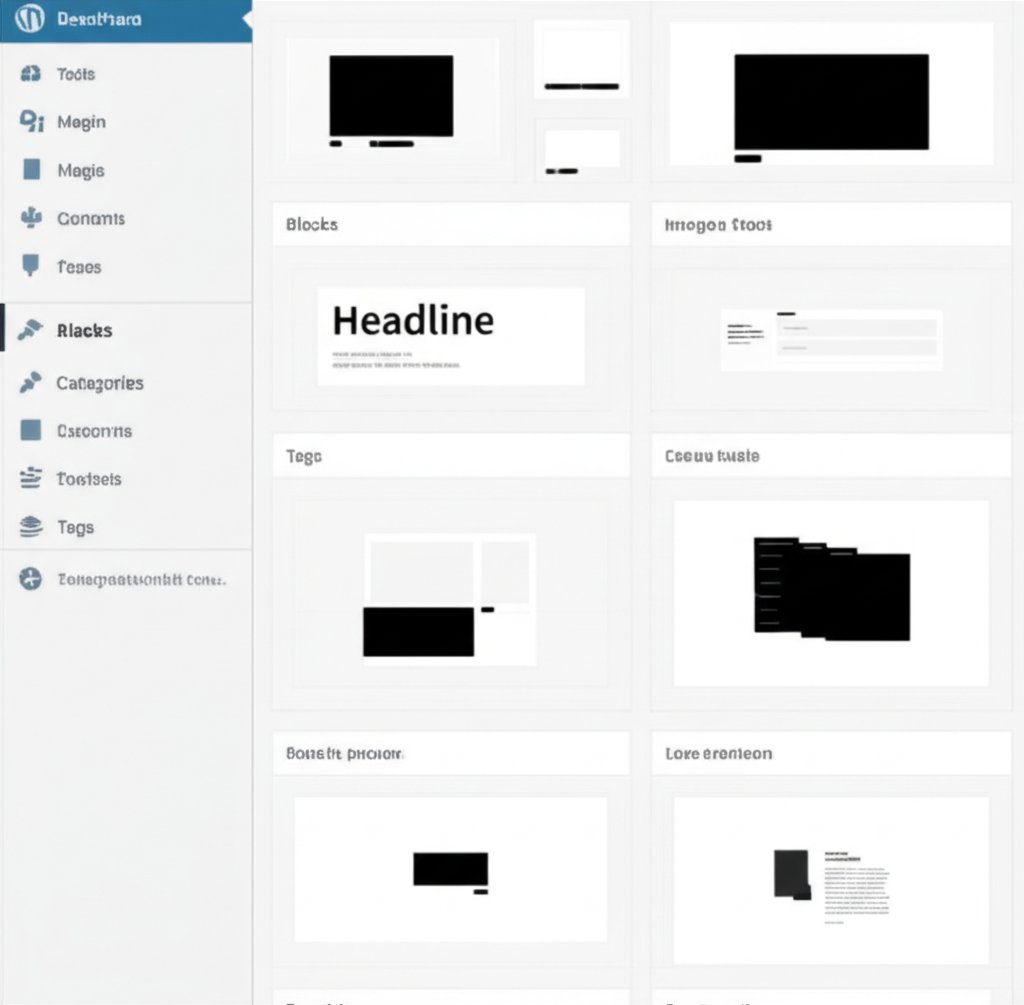Why Blog Post Format Choice Drives Results in 2025
Ever wondered why some blog posts skyrocket in search rankings, while others barely get noticed? The answer often lies in the format you choose. In 2025, picking the right blog post type isn’t just about style—it’s a strategic move that can make or break your traffic, engagement, and conversions. Let’s explore the most-used formats, when to deploy each, and how they fit into a modern content strategy.
Most-Used Types of Blog Posts in 2025
With over 600 million blogs online and audience habits shifting rapidly, creators and brands have embraced a range of blog post types to stand out and deliver value. Here are 10 core formats you’ll see leading the way:
- Listicles
- How-to Guides
- Case Studies
- Comparison Posts
- Opinion Pieces
- News/Curation
- Ultimate Guides
- Checklists
- Interview Posts
- Thought Leadership
Each format brings its own strengths. For example, listicles are highly readable and shareable, while how-to guides address specific problems and attract targeted search traffic. Case studies and comparisons build trust and help readers make decisions, and ultimate guides serve as authoritative resources that can anchor your internal linking strategy.
Choosing the right format can lift CTR 15–30% and conversion 10–20% based on intent alignment.
When to Use Listicles vs How-To Guides
Sounds complex? It doesn’t have to be. Think about your goal and your reader’s intent:
- Listicles: Great for broad topics, trends, or recommendations. Example: “10 Blog Post Types You Should Try This Year.”
- How-to Guides: Best for step-by-step solutions to specific problems. Example: “How to Format a Blog Post for Maximum Engagement.”
Try A/B testing headline styles—test number size in listicles (“7” vs “17”), or focus on instructional verbs versus benefits in how-to titles. This simple tweak can boost clicks and engagement.
From TOFU to BOFU Mapping by Post Type
Content isn’t one-size-fits-all. Mapping your blog post types to the buyer’s journey—Top of Funnel (TOFU), Middle of Funnel (MOFU), and Bottom of Funnel (BOFU)—ensures you meet readers where they are:
- TOFU (Awareness): Listicles, news, and ultimate guides to attract and inform.
- MOFU (Consideration): Comparison posts, checklists, and case studies to nurture and educate.
- BOFU (Decision): In-depth case studies, interviews, and thought leadership to convert and reassure.
For example, a reader discovering your brand might land on a “Top 10” list, then dive into a comparison post as they research options, and finally read a case study before making a purchase decision.
Quick value-adds for your strategy:
- Headline formulas:
- Listicle: [Number] [Adjective] [Topic] You Can Use Today
- How-to: How to [Outcome] Without [Common Pain]
- Comparison: [Tool A] vs [Tool B]: Which Is Better for [Use Case]
- Success metrics by format:
- How-to: Scroll depth 60%+, video plays, template downloads
- Listicle: Time on page, shares, click-throughs
- Comparison: CTA clicks, demo requests
- Internal linking tip: Build a hub-and-spoke content cluster—make your ultimate guide the pillar, with comparisons, checklists, and case studies as supporting spokes.
By choosing the right blog post format for your audience’s needs and your business goals, you’ll notice higher engagement and stronger results across your content funnel. Ready to dive deeper? In the next section, we’ll break down how to evaluate tools and templates for every blog post type.
How We Evaluated Blog Post Tools and Formats
When you’re choosing tools or templates for different types of blog posts, having a clear, transparent evaluation process is essential. Sounds complex? It doesn’t have to be. By breaking down what really matters—like blog writing format, SEO support, and collaboration—you can confidently select the right solution for your team and your content goals. Here’s how we built our framework.
How We Scored Each Tool
Imagine you’re comparing several tools for your blog post formatting needs. What should you look for? We created a weighted scoring system to keep things objective and focused on what drives results in 2025:
- Format coverage and templates (25%) – Does the tool offer templates for all major blog post formats, from listicles to case studies?
- SEO and on-page structure support (20%) – Are there built-in features for keyword optimization and proper blog post formatting?
- Ease of formatting a blog and exporting to CMS (15%) – How quickly can you format a blog post and move it to your CMS?
- Collaboration and briefs/checklists (15%) – Does it support teamwork with editorial briefs, checklists, and comments?
- A/B testing workflows and analytics hooks (15%) – Can you easily test variations and measure results?
- Pricing and scalability (10%) – Is it affordable and able to scale as your blog grows?
| Criterion | Weighting | What It Means |
|---|---|---|
| Format coverage & templates | 25% | Supports all core blog post formats with ready-to-use templates |
| SEO & on-page structure | 20% | Guides keyword placement, headings, and meta data for ranking |
| Formatting & CMS export | 15% | Streamlines formatting and transfers posts to your CMS with minimal friction |
| Collaboration & briefs | 15% | Enables teams to work together with briefs, checklists, and editorial feedback |
| A/B testing & analytics | 15% | Integrates with analytics or supports testing different versions |
| Pricing & scalability | 10% | Fits your budget and grows with your content strategy |
Editorial Brief and Checklist Requirements
To create blog content strategy that’s consistent and effective, always start with a strong editorial brief. Here’s a reproducible checklist you can use for any blog post format:
- Target keyword & user intent
- Secondary terms to include
- Internal links (hub and spokes)
- Schema or rich snippet recommendation
- Outline with H2/H3 subheadings
- CTA placement (inline, sidebar, or after content)
- Image/video plan
- UTM parameters for CTAs
- QA checklist for formatting, links, and SEO
Following a brief like this keeps your blog post formatting on track and ensures nothing slips through the cracks.
Data and Benchmarks Used
How do you know if your content is working? Set clear success metrics for each blog post format. For example, you might track:
- Scroll depth or time on page for how-to guides
- Click-through rates for listicles or comparisons
- Template downloads or video plays for resource posts
Use UTM conventions like utm_source=blog&utm_medium=article&utm_campaign=posttype_[format] to track the impact of each post in your analytics. And don’t forget to run A/B tests—try comparing case study length (1,500 vs 2,500 words) or testing CTA placement (above the fold vs after 70% scroll) to see what drives better engagement (MeasureSchool).
By applying this structured approach to evaluating tools and templates, you’ll make smarter choices for every blog post format—and set yourself up for measurable, scalable growth. Next, we’ll explore a tool that brings these requirements together for fast, high-quality content creation.

BlogSpark
When you’re juggling multiple blog formats and tight deadlines, wouldn’t it be great to have a tool that adapts to your workflow—no matter the post type? That’s where BlogSpark comes in. This AI-powered blog post generator is designed to help you execute a wide range of types of blog posts with speed, consistency, and quality—whether you’re building listicles, in-depth guides, or detailed comparisons.
Best For Listicles, How-To Guides, and Comparisons
Imagine spinning up a cluster of blog content for a new campaign: you need a pillar post, several supporting spokes, and a mix of formats to match your audience’s journey. BlogSpark excels at this, offering robust templates and smart suggestions for the best blog formats, from quick-read listicles to comprehensive how-to guides and side-by-side comparison posts. Its AI-driven approach helps you maintain a consistent blog writing style and structure, so every post aligns with your brand’s tone and SEO goals.
Built-In Editorial Briefs and Checklists
Tired of starting from scratch or missing key details? BlogSpark’s built-in editorial brief system ensures every post—regardless of format—follows a proven checklist. You’ll find prompts for keyword targeting, internal links, image placement, and even recommended CTA spots. Here’s a brief template snippet you can expect:
- Target keyword & intent
- Secondary keywords
- Outline with H2/H3s
- Internal and external links
- CTA and image/video plan
This structure streamlines the process, reduces revisions, and keeps your content focused on results—mirroring best practices seen in top-performing blogs.
Optimization and A/B Testing Workflows
Want to know if a number-led headline outperforms a benefit-led one? Or whether a sticky CTA converts better than an inline version? BlogSpark makes it easy to run these tests across different types of posts. You can generate multiple headline variants, auto-create comparison tables, and export your posts in a clean blog format directly to your CMS—saving hours on formatting and manual tweaks.
Pros
- Fast generation of multiple blog formats
- Consistent, SEO-optimized blog style
- Editorial briefs and checklists built in
- Easy export to WordPress and other CMS
- Supports A/B testing and headline variants
Cons
- Requires initial setup for brand voice
- Some advanced features need learning curve
Key Use Cases
- Spin up a content cluster with pillar and spoke posts in minutes
- Generate five headline variants by blog format for testing
- Auto-create comparison table shells for side-by-side reviews
- Export clean, SEO-ready blog post format straight to your CMS
“A B2B SaaS brand used BlogSpark to launch 12 listicles and 6 comparison posts in 6 weeks, lifting organic clicks 38% and trials 14%.”
With BlogSpark’s rapid brief-to-draft workflow and on-page structure suggestions, you can confidently tackle any blog style or format—saving time and driving measurable results. Next, we’ll examine how long-form assistants like Jasper compare for in-depth guides and thought leadership content.
Jasper AI
When you need to scale up content production—especially for in-depth guides, thought leadership, or comprehensive post examples—Jasper AI stands out as a robust long-form drafting assistant. But what makes it different from other AI tools, and how does it fit into a modern blogging format strategy?
Strength in Long-Form and Workflows
Imagine you’re staring at a blank document, needing to deliver a 2,000-word guide or a detailed interview post. Jasper’s workflow is designed for these scenarios. With over 90 templates and a dedicated long-form editor, you can select the format of a blog post—whether it’s a how-to, listicle, case study, or expert roundup—and let Jasper generate a first draft in minutes. Its document editor supports iterative writing, so you can brainstorm, expand, and refine content directly in one place. This is especially valuable for marketers or teams looking to maintain a consistent blogging format across multiple post types.
Where It Excels and Where It Lags
Pros
- Efficient at producing long-form blog posts samples, from pillar guides to detailed listicles
- Wide range of templates for different blog post types
- Brand Voice and Brand IQ features for consistent tone and style
- SEO Mode for keyword suggestions and on-page structure guidance
- Collaboration tools for teams and multi-user workflows
- Supports over 25 languages for global content strategies
Cons
- Learning curve—best results require detailed prompts and human oversight
- Occasional repetitive phrasing in long-form drafts
- Fact-checking needed for technical or recent topics
- Pricing may be high for individuals or small teams
Jasper’s strength is in scaling content production and maintaining a professional format of a blog post, but some manual editing is still needed to ensure accuracy and originality.
Best-Fit Use Cases by Post Type
- Produce in-depth guides and thought leadership content—ideal for ultimate guides or pillar posts that anchor your content strategy
- Draft interview posts from transcripts—use the editor to structure Q&A sections and highlight expert insights
- Build listicles with consistent tone—generate numbered lists with subheaders and supporting details for each item
For optimization, consider A/B testing content length (e.g., 1,800 vs 2,400 words) or experimenting with different introduction frameworks—story-led versus stat-led intros—to see which resonates best with your audience.
Here’s a micro-brief checklist for using Jasper with any blog post format:
- Define your target keyword and user intent
- Choose the most relevant template (listicle, how-to, case study, etc.)
- Set brand voice and tone preferences
- Outline key sections with H2 and H3 headings
- Include calls to action and internal links
- Review and fact-check for accuracy
Pair Jasper with a dedicated optimizer for on-page structure to reach top-tier results.
Jasper’s combination of templates, collaborative workflows, and brand customization makes it a strong choice for teams who need to scale high-quality long-form content. As you explore the best format of a blog post for your goals, Jasper offers flexibility and power—but remember, pairing it with human editing and optimization tools will help you achieve the best results. Next, we’ll look at tools that excel at rapid ideation and social-ready blog content.
Copy.ai
Ever find yourself staring at a blank screen, wondering how to keep your content calendar full with fresh, relevant ideas? When creative burnout hits or deadlines loom, having a tool that can instantly generate a stream of blog post ideas—and help you adapt them for different platforms—is a game changer. That’s where Copy.ai shines for marketers and creators juggling multiple types of blog posts, from list blogs to social-driven articles.
Idea Generation for Multiple Formats
Sounds complex? Not with AI-powered brainstorming. Copy.ai’s platform is built to automate the process of coming up with blog post ideas at scale. Whether you need inspiration for “this or that posts,” a new list blog, or a deep-dive how-to, Copy.ai’s content marketing AI prompts deliver dozens of angles in seconds. By inputting your goals, target audience, and key themes, you’ll get tailored suggestions that align with your brand and content strategy. The result? A steady stream of topics that keep your blogs and articles fresh and relevant—no more blank-page frustration.
From Blog to Social Distribution
Imagine you’ve just published a high-performing blog post. What’s next? With Copy.ai, turning that article into multiple social-ready snippets is simple. The platform’s workflow automation lets you repurpose blog sections as LinkedIn posts, Twitter threads, or Instagram captions—ensuring your message reaches audiences wherever they are. This seamless transition from long-form to bite-sized content helps you maintain a consistent blog style across platforms and maximizes the reach of every piece you publish. Plus, with AI-powered paraphrasing and content expansion, you can adapt your voice and format for each channel without losing your brand’s essence.
Use Cases and Optimization Tips
- Generate 50 unique listicle angles for your next content sprint in minutes.
- Expand how-to sections with AI-generated step-by-step explanations or examples.
- Transform high-engagement social media threads—like “this or that posts”—into full-length blog articles or list blogs.
Pros
- Rapid idea generation for all blog styles and formats
- Customizable prompts for niche topics and audiences
- Easy repurposing of blog content for social media
- Consistent voice and tone across blogs and articles
- Reduces creative burnout and manual brainstorming
Cons
- Requires human review to align with brand guidelines
- May generate generic ideas without specific prompts
Want to boost engagement? Try A/B testing social-derived headlines versus SEO keyword-led headlines, or experiment with bullets versus short paragraphs for better scannability. You’ll quickly see which approach resonates with your audience.
| Checklist for Consistent Blog Style |
|---|
| Define target voice and tone for each post |
| Set ideal sentence length and paragraph structure |
| Include platform-appropriate formatting (bullets, lists, headings) |
| Ensure every post delivers value and addresses reader intent |
| Review for clarity, grammar, and flow before publishing |
“Repurposing a ‘this or that’ social thread into a list blog cut bounce rate by 12%.”
By integrating Copy.ai into your ideation and drafting workflow, you’ll notice more consistent publishing, a wider array of blog styles, and content that’s ready for both your website and social channels. Next, let’s explore how Writesonic accelerates SEO-friendly drafting for a variety of blog post types.

Writesonic
When you need to deliver timely content or adapt quickly to trending topics, speed and structure can make all the difference. That’s where Writesonic stands out—offering an AI-powered platform that’s built for fast, SEO-aware drafting across all types of posts. Whether you’re wondering how to format a blog for search, or juggling multiple blog formatting needs, Writesonic’s tools help you streamline the process and keep up with the pace of digital publishing.
Template Coverage by Post Type
Imagine you’re tasked with creating a listicle, a step-by-step guide, and a comparison post—all in one week. Sounds overwhelming? With Writesonic’s comprehensive template library, you can select the right structure for each job. The platform includes ready-made templates for:
- Listicles—generate numbered lists with headlines, intros, and takeaways
- How-to guides—break down complex processes into actionable steps
- Comparison posts—auto-build pros/cons blocks and summary tables
- Product reviews, news updates, and even social content
Each template prompts you to enter your topic, keywords, and tone. You can also specify secondary terms and select a word count, making it easy to align your output with your overall blog formatting strategy.
SEO Prompts and Outline Control
Worried your content won’t rank? Writesonic integrates SEO optimization at every step. The AI Article Writer walks you through:
- Adding primary and secondary keywords
- Choosing a working title and meta description
- Building a detailed outline with H1, H2, and H3 headings
- Getting real-time suggestions for keyword placement and internal linking
The platform’s SEO Checker scans your draft for missing headers, keyword gaps, and formatting issues—helping you fix them before you publish. Plus, integration with tools like Google Search Console and Ahrefs means you can base your content on live data and competitor insights.
Execution Playbooks and Tests
How do you make sure your blog post format is optimized for your audience? Writesonic supports a range of use cases and testing options:
- Fast listicles for timely topics: Generate and publish trending lists in minutes, ideal for news-adjacent content.
- How-to posts with step modules: Use modular prompts to create clear, actionable guides that readers can follow.
- Comparison posts with pros/cons blocks: Auto-generate side-by-side tables and bullet lists for quick decision-making.
To further optimize, consider A/B testing:
- FAQ schema enabled vs. disabled—see if adding FAQs improves search visibility
- Numbered steps vs. descriptive subheadings in how-to posts—track which format boosts scroll depth and engagement
| Mini Editorial Brief for Writesonic |
|---|
| Target keyword and user intent |
| Primary and secondary keywords |
| Outline with H2/H3 subheadings |
| Internal links to related posts |
| SEO checklist: meta, schema, images |
| Call-to-action (CTA) placement plan |
Pros
- Ultra-fast draft generation for all types of posts
- Integrated SEO prompts and optimization tools
- Supports a variety of blog formatting needs
- Beginner-friendly interface with real-time editing
- Multilingual and collaborative features for teams
Cons
- Requires manual review for brand voice and tone
- Some advanced features locked behind paid plans
- Output may need editing for technical or nuanced topics
Speed-to-publish matters for news-adjacent content—Writesonic shines for quick, structured drafts.
By leveraging Writesonic’s templates, SEO guidance, and flexible formatting options, you can confidently tackle any blog post type—whether you’re racing to cover a breaking trend or building out evergreen resources. Next, we’ll see how optimization engines like Surfer SEO help you refine on-page structure for even better ranking potential.
Surfer SEO
When you’re aiming for top search rankings, simply choosing the right blog type isn’t enough. How you structure and optimize your content—down to headings, coverage, and internal links—can make or break your results. Sounds overwhelming? Surfer SEO is built to simplify and systematize this process, no matter which format of a blog you’re working on. Let’s break down how Surfer’s data-driven approach helps you turn any blog post into a ranking contender.
Data-Driven Outlines and SERP Analysis
Ever wondered how top-performing blogs structure their posts? Surfer SEO analyzes the search engine results page (SERP) for your target keyword, pulling in live outlines from competitors to reveal what’s working right now. Imagine creating a how-to guide, comparison, or case study: Surfer’s Outline tool lets you see the most common (and missing) headings, so you can build a structure that aligns with both user intent and Google’s expectations. You can insert an AI-generated outline with a click, or tweak it to match your preferred blog type and audience. This ensures your content is never out of step with what’s ranking for your topic.
Content Score and Term Coverage
Not sure if your post is ready to publish? Surfer’s Content Score acts as a live quality meter, scoring your draft from 0 to 100 based on how well it matches top-ranking pages. A score above 66 means you’re likely ahead of most competitors, but even moving from 60 to 75 can make a noticeable difference—especially for mid-volume or competitive types of blogs. The Content Score considers word count, structure, keyword usage, and topical depth. The Terms panel highlights essential phrases and entities to include, helping you avoid gaps that might cost you rankings. Want to cover all your bases? Use Surfer’s Boost Coverage feature to add missing context or NLP-rich terms, ensuring your content is both complete and relevant.
Improving content score from 60→75 often correlates with higher average positions, especially for mid-volume terms.
Workflow Tips by Format
- Optimize how-to and guides: Use Surfer’s Outline and Terms tabs to build stepwise, actionable content with strong H2/H3 structure. Check the Topics and Questions section to ensure you answer what readers are searching for.
- Calibrate comparison posts’ headings and tables: Review competitor outlines to spot common comparison points. Use Surfer’s structure controls to adjust heading count or add tables for clear, side-by-side evaluation.
- Improve case study readability: Leverage Surfer’s Notes and collaboration features to assign tasks, add editorial guidance, and ensure your case study covers all relevant details and supporting evidence.
Pros
- Data-driven outline and structure recommendations for any blog type
- Live Content Score helps you measure and improve quality in real time
- Guided keyword and entity inclusion for comprehensive coverage
- Collaboration tools and export options for team workflows
- Automated internal linking suggestions to strengthen site structure
Cons
- Requires initial setup and learning curve for best results
- Does not write full posts—best paired with a drafting tool
- Some features rely on integration with Google Search Console
For optimization, consider A/B testing your blog formatting: try adding missing entities versus FAQs, or increasing H2 count by two compared to your baseline structure. You’ll often notice improved engagement and higher search positions—especially for complex or competitive types of blogging.
By building your workflow around Surfer SEO’s optimization engine, you’ll systematize quality and structure for every format of a blog post. This not only boosts your rankings, but also streamlines collaboration and content planning for any blog type. Next, let’s see how WordPress supports publishing, formatting, and extensibility for all kinds of blogs.

WordPress
When you think about where can you post blogs and how to make them stand out, WordPress remains the go-to platform for creators and businesses in 2025. But what makes it so effective for different types of blogs? It’s not just about publishing—it’s about how WordPress empowers you to control formatting, organize content with categories and tags, and measure performance across every post type. Let’s break down why WordPress is the backbone of modern blog publishing.
Theme and Block Controls for Formatting
Sounds complex? WordPress makes formatting a blog accessible, even for beginners. With a vast library of themes and a flexible block editor, you can design posts that are visually appealing and easy to read. Imagine dragging and dropping blocks for headings, bullet lists, images, and even custom elements like comparison tables or checklists—no coding required. This modular approach means you can match your formatting to any type of blog post, from listicles to interviews, ensuring consistency and professionalism every time.
- Organize content with clear headings and subheadings for better readability
- Use bullet points and numbered lists to break down complex ideas
- Add images, videos, and block quotes to enhance engagement
- Preview your post before publishing to ensure optimal layout
With reusable blocks, you can quickly insert pros/cons tables or call-to-action sections across multiple posts, saving time and maintaining a consistent blog style.
Categories, Tags, and Internal Linking
Ever wondered how readers find related content or how search engines understand your site’s structure? WordPress’s taxonomy system—blog categories and tags—lets you group posts for both humans and algorithms. Categories act as broad topics, while tags pinpoint specific themes or details. This structure creates automatic archive pages, helping users discover more of your content and improving SEO.
- Categories: Use for major topics (e.g., Reviews, Guides, News)
- Tags: Highlight specific subjects or recurring themes
- Internal links: Connect related posts to guide users and share SEO value
Smart internal linking keeps visitors engaged longer and helps search engines identify your most important posts. Make sure every new article links to relevant category hubs or cornerstone content for maximum impact.
Publishing Workflows and Metrics
Publishing isn’t just about hitting “Post.” WordPress supports robust workflows—drafts, previews, scheduled publishing, and version control—to keep your editorial process smooth. You can standardize author boxes, CTAs, and even automate social sharing with plugins, ensuring every post aligns with your brand’s voice.
- Create reusable blocks for pros/cons and comparison tables
- Standardize author boxes and calls-to-action across posts
- Build category hubs to cluster related content and boost discoverability
Want to optimize your layout? Try A/B testing a sticky Table of Contents versus an inline version, or experiment with the sidebar on versus off. Track which format keeps users scrolling and which boosts session depth.
Consistent format of a blog post improves readability scores and session depth across categories.
Pros
- Highly customizable formatting with themes and blocks
- Easy organization using categories and tags
- Supports all types of blog posts, from listicles to case studies
- Strong internal linking and SEO capabilities
- Extensive plugin ecosystem for added features
Cons
- Requires initial setup and ongoing maintenance
- Too many plugins can slow down your site
- Learning curve for advanced customization
By leveraging WordPress’s formatting tools, taxonomy features, and workflow controls, you’ll find it easier to manage and grow any kind of blog. Next, we’ll compare leading tools side by side to help you choose the right stack for your content strategy.
Side by Side Comparison
Feature and Pricing Comparison
When you’re building a professional blog—or evaluating tools for a new content strategy—it helps to see the leading platforms lined up side by side. The table below compares the best options for different types of blog posts, from all-in-one AI generators to publishing backbones. You’ll notice each tool brings its own strengths, from robust templates to collaboration and SEO support.
| Tool | Best For | Templates | SEO Support | Pricing | Rating | Notable Con |
|---|---|---|---|---|---|---|
| BlogSpark | Listicles, how‑to, comparisons | Robust by post type | Outline, entities | Mid | 4.7/5 | Newer ecosystem |
| Jasper | Long‑form guides | Strong | Basic | High | 4.5/5 | Requires optimizer |
| Copy.ai | Ideas and social | Good | Light | Mid | 4.4/5 | Less structure |
| Writesonic | Fast SEO drafts | Good | Solid | Low–Mid | 4.4/5 | Style variance |
| Surfer SEO | On‑page optimization | N/A | Excellent | Mid | 4.6/5 | Needs a writer |
| WordPress | Publishing | N/A | Plugins | Low | 4.6/5 | Setup required |
Ratings and Notable Tradeoffs
Choosing the right tool for your blog strategy means weighing tradeoffs. BlogSpark leads for template variety and AI-powered brief-to-draft speed, making it a strong fit for businesses scaling multiple kinds of blogs. Jasper is ideal for long-form, professional blogs, while Copy.ai excels at rapid idea generation and social content. Writesonic offers quick SEO-friendly drafts, Surfer SEO boosts on-page structure, and WordPress remains the gold standard for publishing and extensibility.
"No single tool fits every workflow. The best results come from combining format-specific generators like BlogSpark with optimization and publishing platforms to cover all your blog post needs."
Selection Tips
Not sure which tool to prioritize for your next content sprint? Here are actionable tips to guide your decision—whether you’re writing examples of blogs for business or launching a new content hub:
- Prioritize format coverage: Ensure the tool supports all core blog post types you plan to publish (listicles, how-tos, comparisons, etc.).
- Check export options: Look for seamless integration with your CMS or direct export to platforms like WordPress.
- Verify A/B testing hooks: Choose tools that let you run headline, CTA, or layout experiments to optimize for engagement and conversions.
- Review collaboration features: For professional blogs or larger teams, select platforms with built-in briefs, checklists, and multi-user workflows.
- Balance price and scalability: Match the pricing tier to your current needs but ensure the tool can scale as your strategy grows.
By comparing these platforms side by side, you’ll be able to select the right stack for every type of blog post, ensuring your content strategy is both effective and future-proof. Next, we’ll help you decide which combination best fits your goals—and how to take action in your first 30 days.

Which Tool Is Best for Your Blog in 2025?
Quick Decision Matrix
Staring at a lineup of tools and wondering which fits your next content sprint? Sounds complex, but you can break it down with a practical decision matrix. When you’re weighing multiple options for different kinds of blogs or content for blogs with unique goals, a matrix helps you compare strengths, tradeoffs, and the best match for your workflow:
- If you need fast, format-specific briefs and drafts across multiple types of blog posts, start with BlogSpark and its AI Blog Post Generator. It’s built to transform your ideas into structured, SEO-ready drafts for any kind of blog—listicles, how-tos, comparisons, and more.
- If you already draft in-house but need optimization, add Surfer SEO to your stack. Its data-driven structure and content scoring will help you refine and elevate every post type.
- For long-form depth and thought leadership, consider Jasper for its robust templates and collaborative workflows.
- For rapid ideation and social expansion, Copy.ai is your go-to for generating angles and repurposing content into social-ready formats.
- For speed drafting and timely content, Writesonic delivers fast, SEO-friendly drafts for trending topics and evergreen posts alike.
- To publish and standardize across all kinds of blogs, rely on WordPress for formatting, taxonomy, and scalable workflows.
Ship your next cluster with BlogSpark and measure lift in 30 days.
Next Steps and 30‑Day Plan
Ready to put your decision into action and see measurable results? Here’s a quick 30-day plan inspired by proven content marketing frameworks (Column Content):
- Finalize your content cluster map: Identify pillar topics and supporting spokes for every kind of blog you plan to launch.
- Build editorial briefs: Use templates to ensure every post is aligned with your strategy and covers all SEO, structure, and CTA needs.
- Set benchmarks: Define metrics—traffic, engagement, conversions—for each blog post type. Use UTM parameters to track performance by format.
- Launch two formats per week: Commit to publishing at least two new blog post types weekly (e.g., a listicle and a how-to) to build momentum and gather data fast.
By following this plan, you’ll quickly identify what resonates with your audience and which tools deliver the best ROI for your great blog posts.
Testing and Tracking
How do you know your choices are working? Continuous testing and tracking are key to refining your strategy and maximizing results. Here’s a mini testing plan you can implement right away:
- A/B test headline styles: Try number-led vs. benefit-led headlines for listicles and how-tos.
- Experiment with CTA placement: Test inline CTAs versus sticky or after-content CTAs to see which converts better.
- Toggle TOC presence: Add or remove a Table of Contents to monitor effects on scroll depth and engagement.
- Track conversions via UTMs: Use clear UTM conventions for every CTA to see which blog post types and formats drive the most action.
Review analytics after each sprint, compare results by post type, and iterate quickly. This approach ensures your content for blogs stays competitive and your strategy evolves with real data—not guesswork.
- Finalize your content cluster map and editorial calendar
- Build editorial briefs for each post type
- Set clear benchmarks for success
- Launch and test at least two new formats per week
- Review results, optimize, and repeat
By following this clear decision path, you’ll not only select the right tools for every kind of blog you manage, but also execute a content plan that’s agile, data-driven, and designed for growth. Ready to create great blog posts that stand out in 2025? Your next step: put these recommendations into action and track the lift in your results over the next month.
Frequently Asked Questions
1. What are the most effective types of blog posts for increasing traffic?
The most effective blog post types for boosting traffic in 2025 include listicles, how-to guides, case studies, comparison posts, and ultimate guides. These formats are highly engaging, easy to scan, and align well with different stages of the buyer journey, helping attract and retain a wider audience.
2. How do I choose the right blog post format for my content strategy?
Select your blog post format based on your audience's intent and your business goals. For broad awareness, use listicles or news posts; for in-depth education, opt for how-to guides or ultimate guides; and for decision-stage readers, use case studies or comparison posts. Mapping formats to the content funnel ensures better engagement and conversions.
3. What tools can help me create and optimize different types of blog posts?
Tools like BlogSpark, Jasper, Copy.ai, Writesonic, Surfer SEO, and WordPress each offer unique benefits for blog creation and optimization. BlogSpark stands out for fast, format-specific AI drafts and built-in editorial briefs, while Surfer SEO specializes in on-page optimization, and WordPress excels in publishing and formatting control.
4. How can I measure the success of different blog post formats?
Track metrics such as scroll depth, time on page, click-through rates, and conversions. Use A/B testing for headlines and CTA placements, and apply UTM parameters to monitor the performance of each post type. This data-driven approach helps identify which formats drive the best results.
5. What is BlogSpark and how does it improve blog content creation?
BlogSpark is an AI-powered blog post generator designed to streamline content creation. It offers intelligent keyword discovery, SEO-focused outlining, customizable brand voice, and built-in originality checks. Its seamless export options and integration with platforms like WordPress make it easy to produce high-quality, SEO-optimized articles efficiently.




